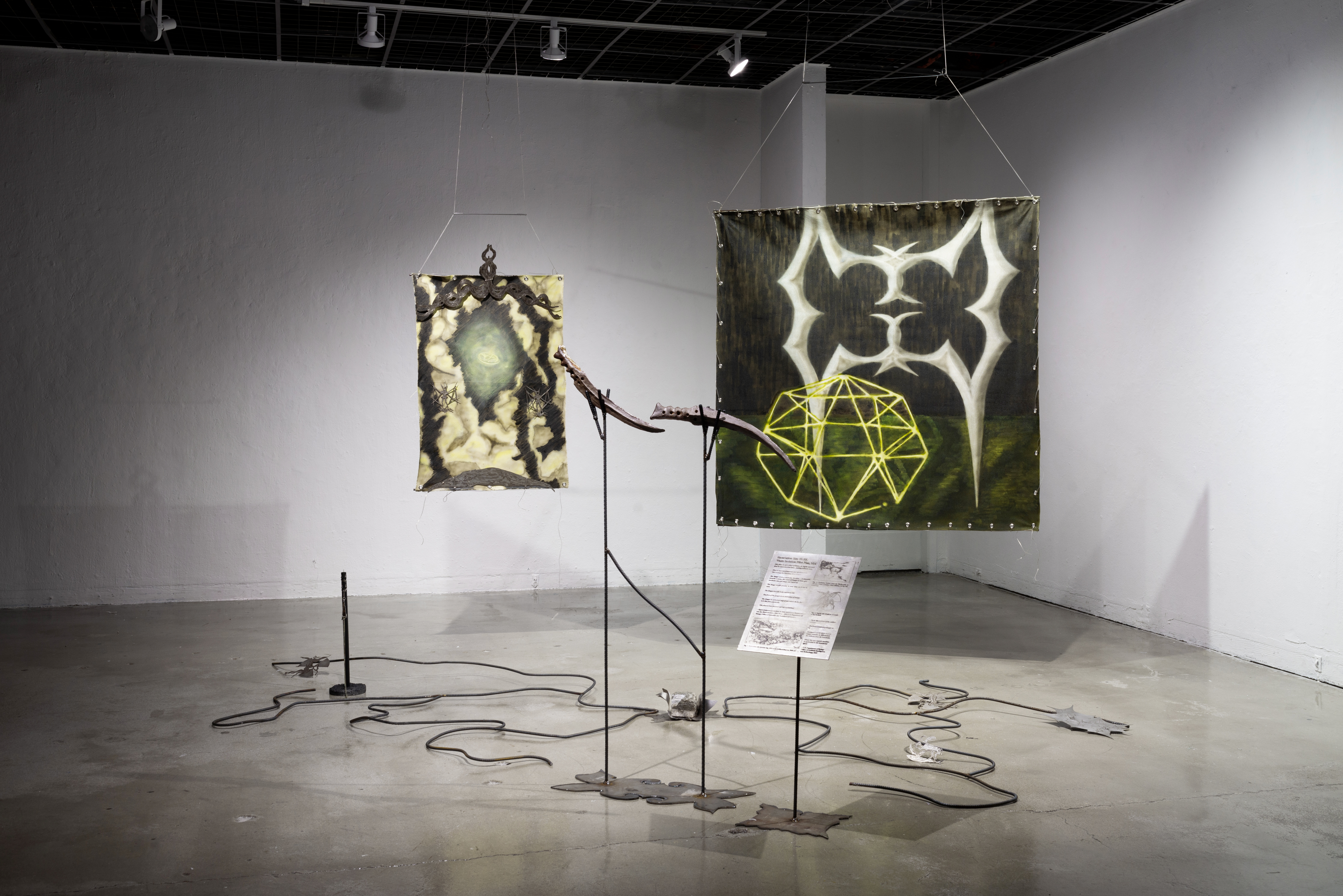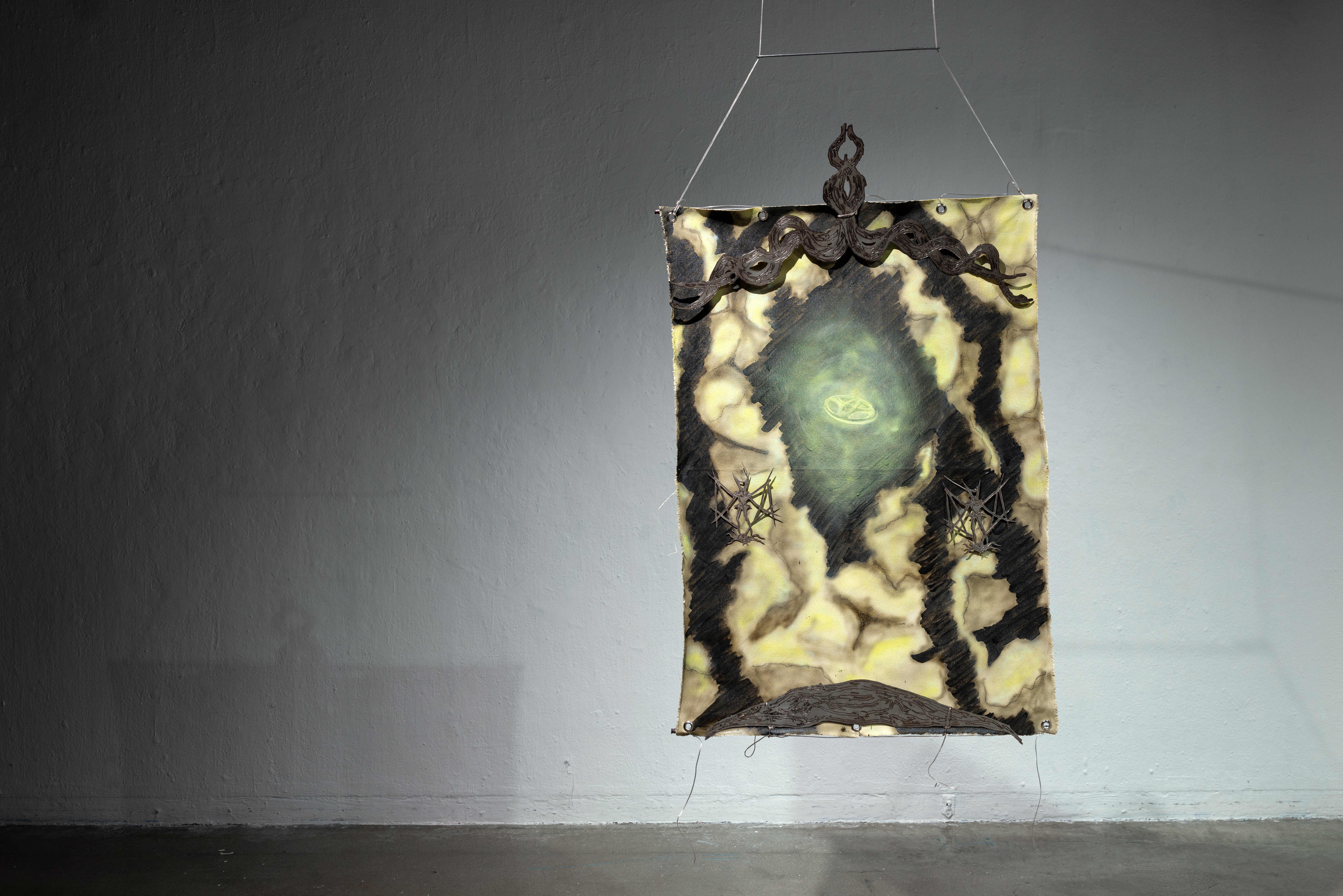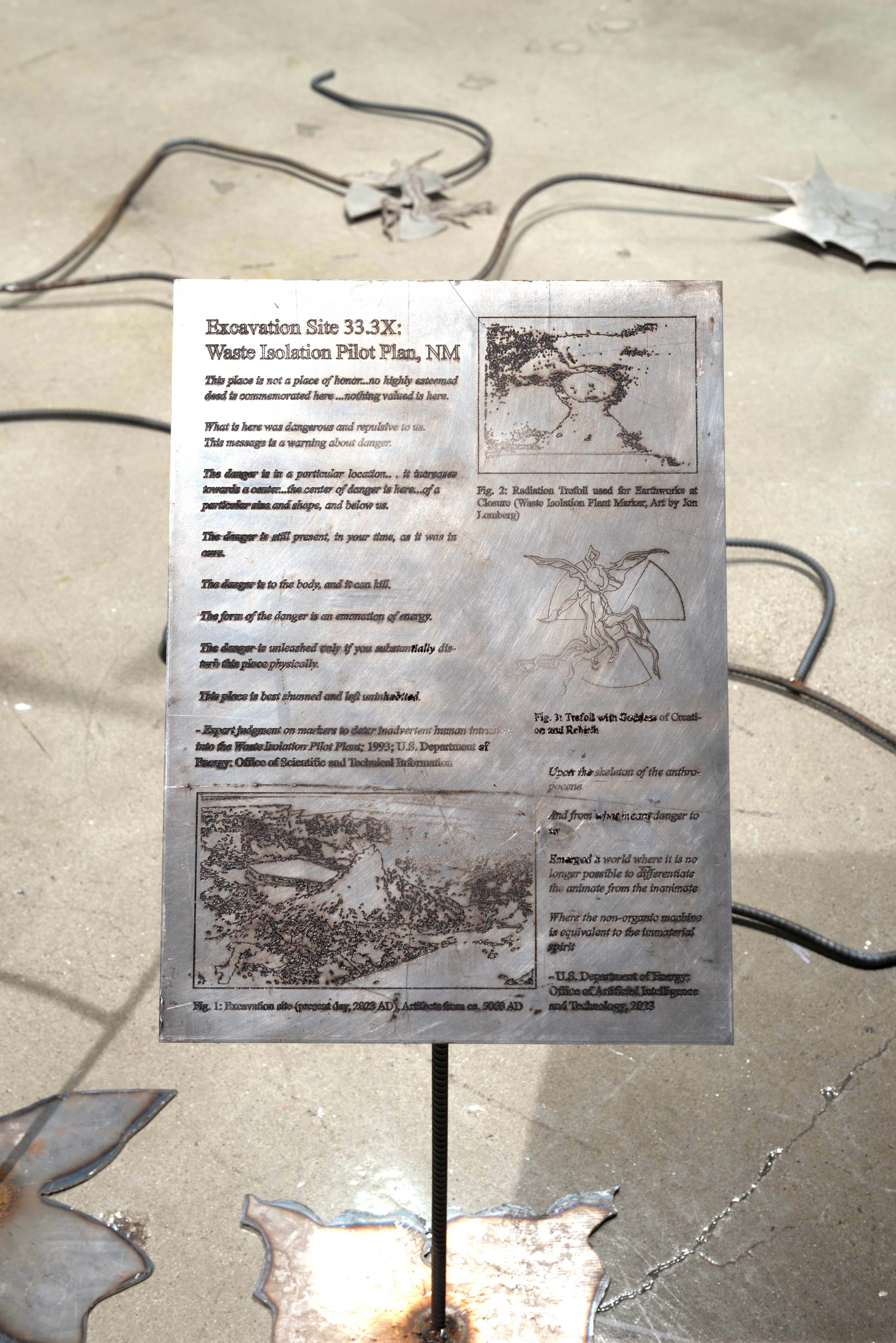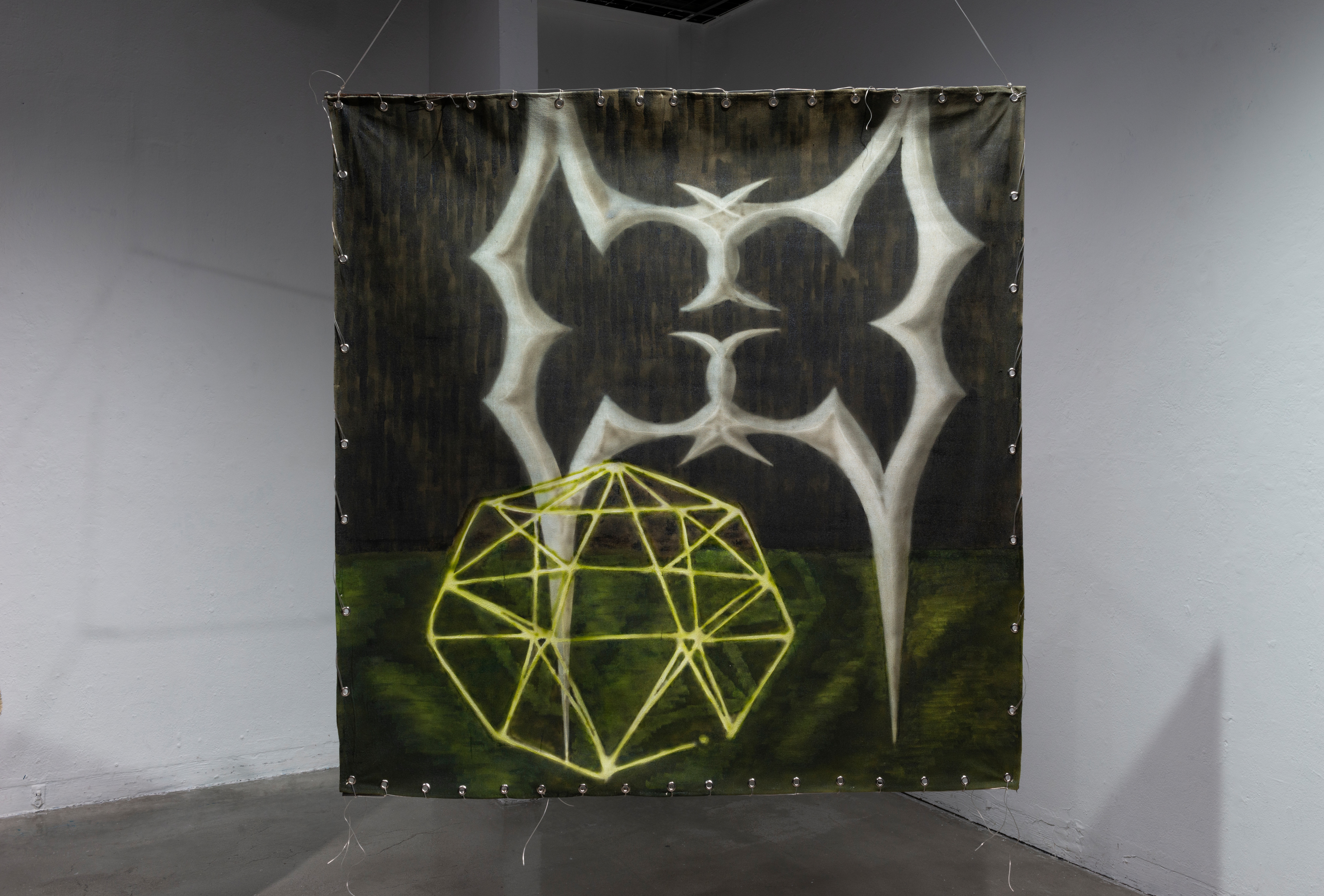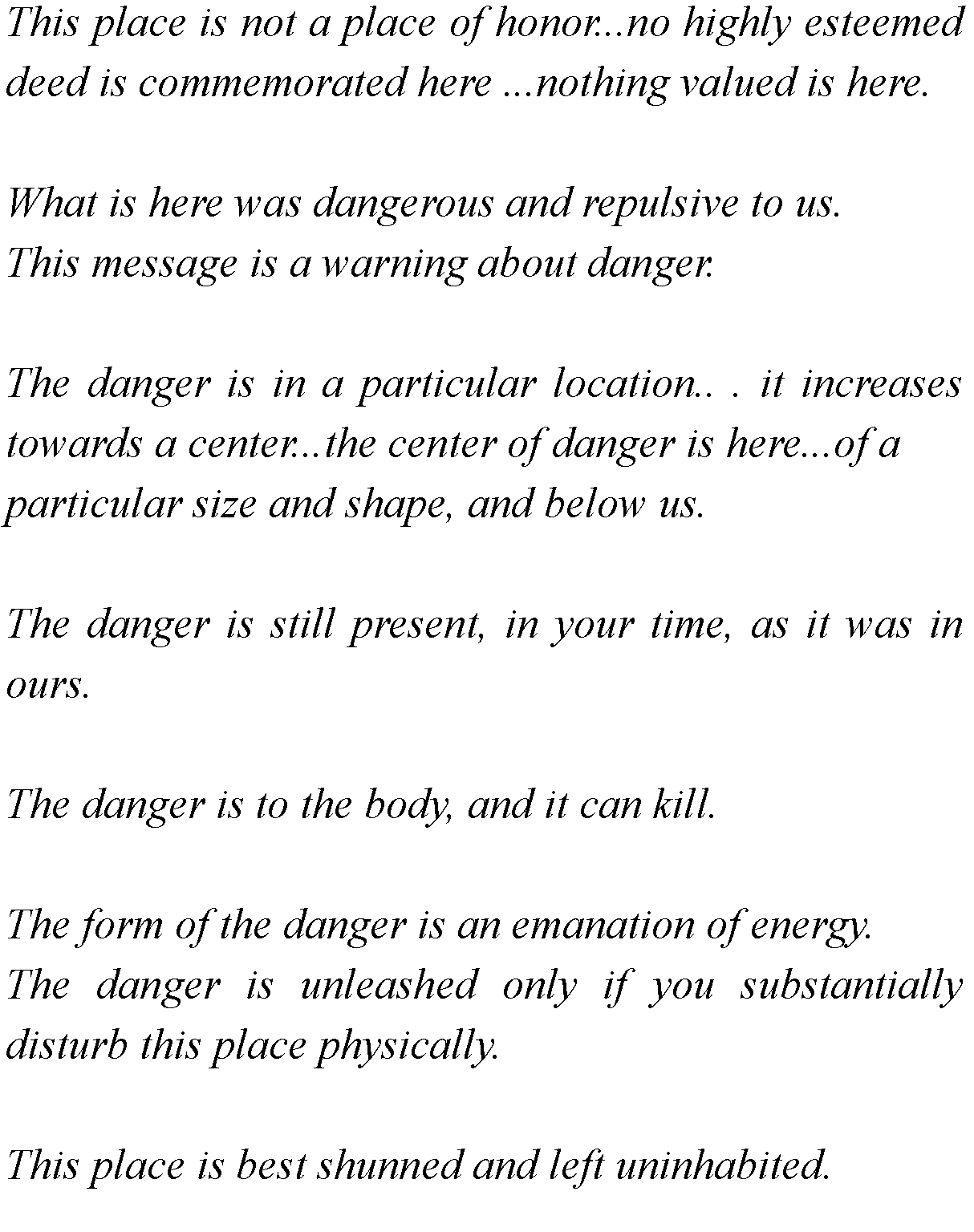This is not a Place of Honor - 2023
metal work, painting, ceramics, sculpture, installation, writing
This installation is a hybrid work of speculative archeology of the future and physical interpretation of a three dimensional (VR) video game interface. It investigates translatability and the transformation of meaning over time and between different species and civilizations, consequences of humanity’s un- sustainable consumption of resources and the effects of waste production on the planet’s ecology; the ruins and remains of the Anthropocene; religion, mythology and magic; pseudo-science, and cartography. The piece was influenced by Leonora Carrington’s surrealist works and Hieronymus Bosch’s fantastic paintings, Athanasius Kircher’s semi-scientific and religious drawings and etchings speculating about the interior of the earth, dystopic video games, VR technology and interfaces, the Fruit Ninja game for iPhone, displays in anthropological museums, and a 1993 report by the Human Interference Task Force for the US Department of Energy: “Expert Judgement on Markers to Deter Inadvertent Human Intrusion into the Waste Isolation Pilot Plant”.
Through the combination of classical art references and traditional techniques, contemporary digital aesthetics, and modern technology this work responds to the fast-paced changes, dynamic reinterpretations, and intense transformations in society and culture, the accessibility to a multiplicity of viewpoints facilitated by the widespread availability of digital technology, the internet and the memefication of symbols in online culture, popular culture, and social media in the 21st century. The work furthermore references feminist posthumanism, non-linear, cyclical concepts of time, and entanglements of universal time and space beyond our human perspective.
The installation is set up like a three dimensional menu scene in a (VR) video game with a stylized map on the ground, controllers for the player in front, and two portals to individual scenes / locations within the game. At the front of the installation is a sculpture of VR controllers on a stand, the controllers are made out of stoneware and end in a knife-like shape inspired by the samurai sword in the mobile game Fruit Ninja. The stand is made of rebar and steel plates and covered in plastic dip to hold the ceramic pieces. The controllers point to an interactive magical element in the installation that either pre- or post- dates digital technology that can also be be understood as a relic from a more violent time, now petrified and almost harmless.
The paintings are installed like medieval banners hanging freely from the ceiling, attached to rebar and hanging from audio cables. The small painting, resembling a shrine or altar, shows a glowing, elevated, rotating Toyota logo within a sacred cave, presented like an animated preview of a 3D model. The corporate logo is taken out of its usual context and depicted as a sacred symbol (as it has been interpreted in some parts of internet culture). It is set in context with ancient-looking AI-generated glyphs and CNC aluminum engravings of guardians in the style of 16th century drawings. The perfect symmetry and ellipses of the logo have the potential to be interpreted as religious or spiritual symbols in the future.
The second painting depicts a diamond and a gothic ornament on a table. It plays with perspective, reflection and scale and with spiritual or mystical symbols referring to the fluidity of meaning and relation of the material to the body and the appropriation and (speculative) evolution of styles in art and architecture. This play with scales and styles is a method I like to use in three-dimensional video games, here manifested in a still image and executed as a painting.
The museum-like plaque next to the controllers prompts contemplation about how certain meanings can undergo a complete transformation once humanity is no longer the central point of interpretation. It vaguely introduces the narrative of an archeological site / display in the future, following the extinction of humanity, reinterpreting our symbols and attempts to communicate with future inhabitants of earth within this other species / civilization’s own cultural framework. The piece suggests a future parallel to our archeological practice of inventing narratives based on the evidence or clues we find in the ground. Whenever a symbol appears frequently we assume it to be a sacred symbol for the civilization we are investigating.
The plate introduces the theme of the post-Anthropocene, highlighting the impact of human civilization on the earth, leaving behind an anthropogenic geological layer of waste with inscribed information/data. The inscriptions on the plate speak of an event in 1993: the conference that resulted in the report “Expert Judgement on Markers to Deter Inadvertent Human Intrusion into the Waste Isolation Pilot Plant”. Various groups of “experts”–scientists, philosophers, anthropologists–conceptualized ideas of how to mark nuclear waste deposits to communicate a warning to future generations and civilizations. Nuclear waste in such a deposit is believed to remain dangerous for 20.000 years. Because there is no record of any language surviving for such a long time, they investigated ancient symbols and inscriptions and came up with concepts for architecture and landmarks, an atomic priesthood etc. The weathered and unevenly inked plate presents the trefoil as such a potential landmark and comes with a warning message taken directly out of the report.
The second “quote” is my own poem, though the plates list a speculative source. The skeleton of the Anthropocene refers to the future anthropogenic geological layer and all the waste and traces humanity has left on the planet, the most durable structures being made from with rebar reinforced concrete. Rebar, straight or bent and deformed, is one of the major materials in this and other of my recent works. It is repurposed in the stands that hold the plate and ceramics, as well as the flag like draping of the paintings. The network or roots of rebar along with the aluminum carvings on the floor creates a hypothetical map of the excavation site and has an unfinished diamond rock in the center.
The second passage of the poem is a quote from Mark Fisher’s Flatline Constructs: Gothic Materialism and Cybernetic Theory-Fiction (2018). The image depicting the excavation site is a modified photo of Pierre Huyghe’s Installation “After Alife Ahead” at Skulpturprojekte Münster in 2017, an inspiration for this work.
![]()
![]()
![]()
![]()
![]()
![]()
![]()
![]()
![]()
